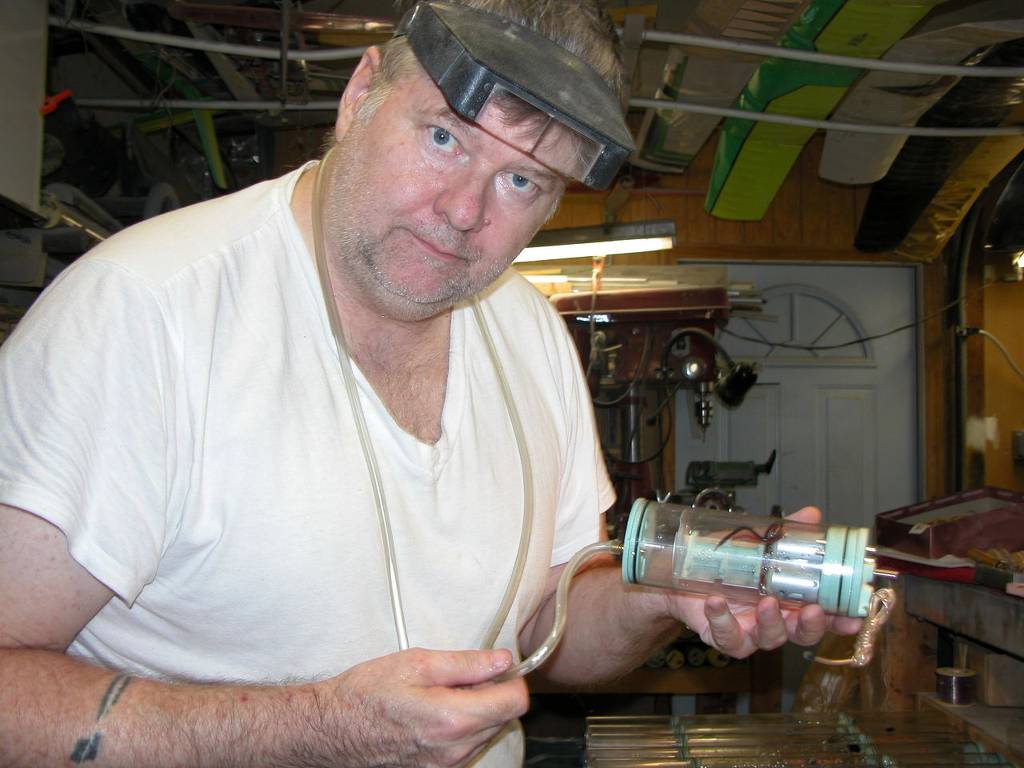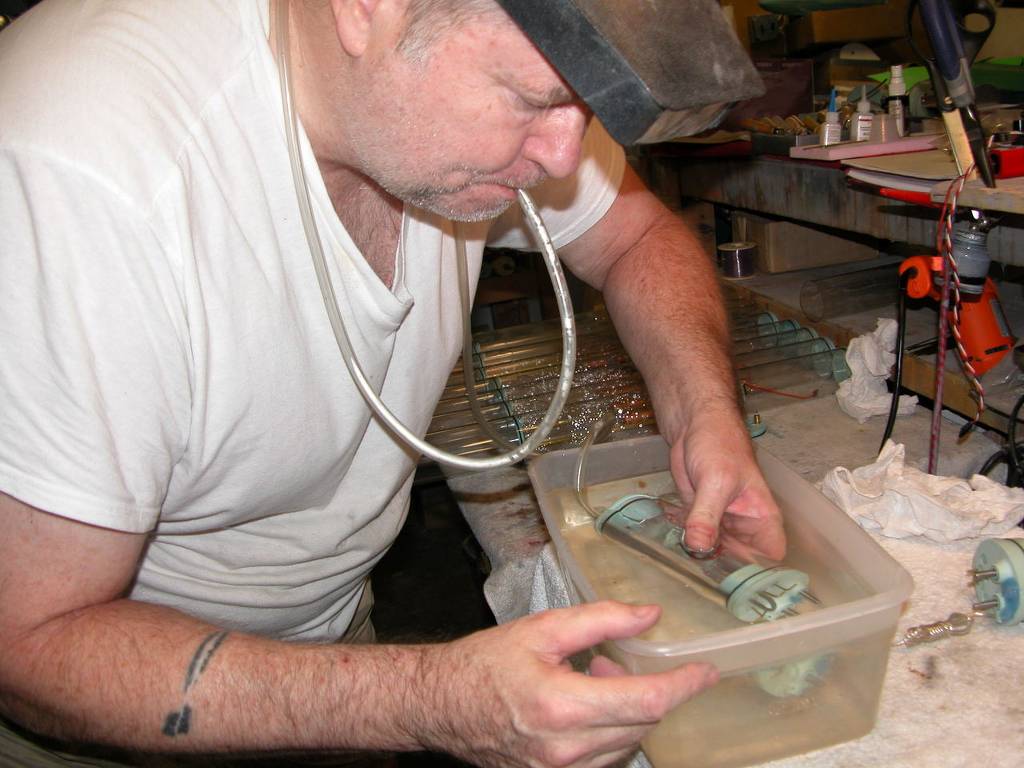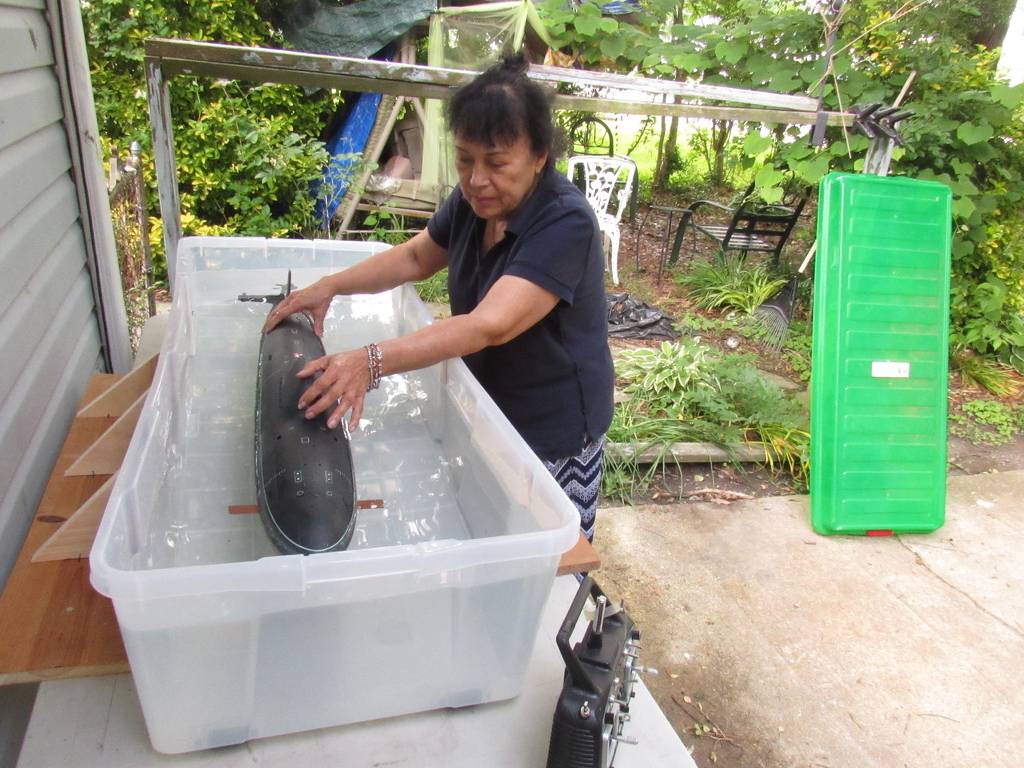Ok, today I tested my OTW cylinder in the bath. And yes I have a small leak. There are no air bubbles to see, but in 30 minutes under the bath water I have around 10mm deep water in one side of the cylinder. I have replaced all the o rings and gaskets with new. So what is the best way to find that leak? Anyone have any good ideas.
How to find that leak?
Collapse
X
-
Tags: None
-
Take a dry sponge, chop it up into little pieces and tac-glue the pieces (with RTV adhesive) to various locations (low) in the section of cylinder with the leaks. Submerge for a short period of time, bring it up, and see which sponge segments absorbed water -- that will clue you as to what and where you're getting the leak(s).Ok, today I tested my OTW cylinder in the bath. And yes I have a small leak. There are no air bubbles to see, but in 30 minutes under the bath water I have around 10mm deep water in one side of the cylinder. I have replaced all the o rings and gaskets with new. So what is the best way to find that leak? Anyone have any good ideas.
Or over-pressurize the cylinder with a length of hose by blowing into it and looking for where the bubbles come out.






DavidWho is John Galt? -
The original OTW system pressurises the forward and aft compartments as the tank fills (closed cycle), so that should produce some bubbles. 10mm (3/8") of water is a fairly substantial leak IMO so should be easy to spot.Comment
-
Common leak points in OTW cylinders as taken from life experience include the tube o-rings (not seated flat and rods not tightened evenly), pinholes in pushrod boots, the pump inlet hose-to-barb connection at the front end-plate, and the pump to ballast tank hose ends, at the pump or at the tank bulkhead. Not as likely but seen on occasion; the o-rings at the sensor probes in the ballast tank bulkhead. These can get boogered-up when doing probe cleaning procedures. You also have to ensure that your shaft seals are made up correctly and have good grease inside of those assemblies. One of my friends suffered a major failure of a seal assembly (no rotate + leaking) because of corrosion inside a seal unit. Fixed now!!!
Because the filling action of the ballast tank pressurizes the cylinder through an internal vent hole in the fwd tank bulkhead, one must use caution when lifting the cylinder with a full tank, as it is very easy to flood the front compartment through that little hole! Try to stay as flat (horizontal) as you can as any down angle will send a torrent where you don't want it!!!!Comment
-
Thanks chaps. I think it's one of the o rings. So will play around a bit more. Also does anyone know the make and model of the pump sensor, the label as been removed from the one I have. Thanks for your input.Comment
-
-
-
If you have a bit of electronics know how, or know someone who has, then probably nothing too taxing inside, although the board is very likely to use a microcontroller of some description inside, and that will most likely use some custom firmware. If that's goosed you'll probably have to bite the bullet and order a replacement board if you want to retain full functionality of the ballast system.Comment




Comment